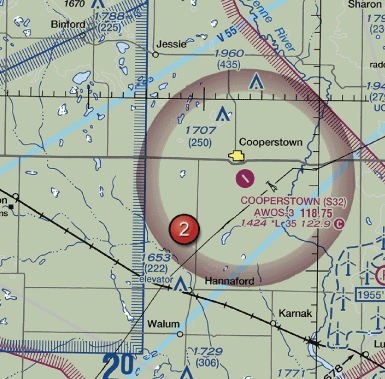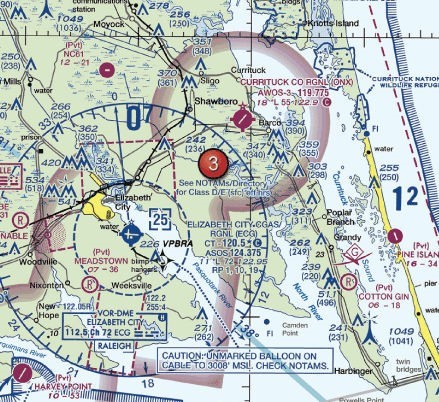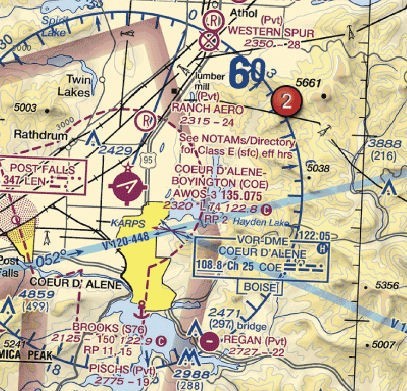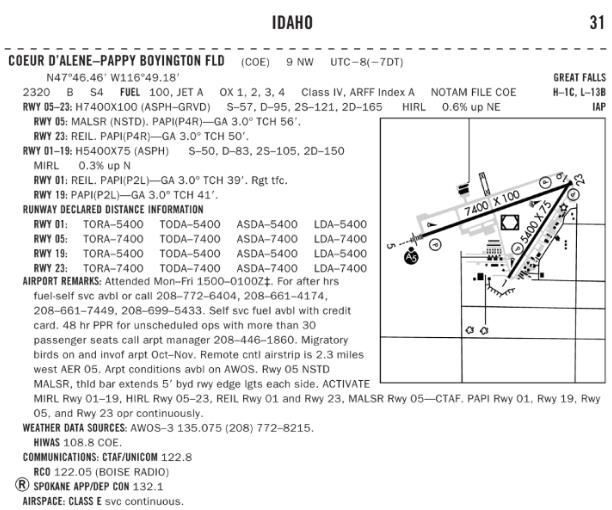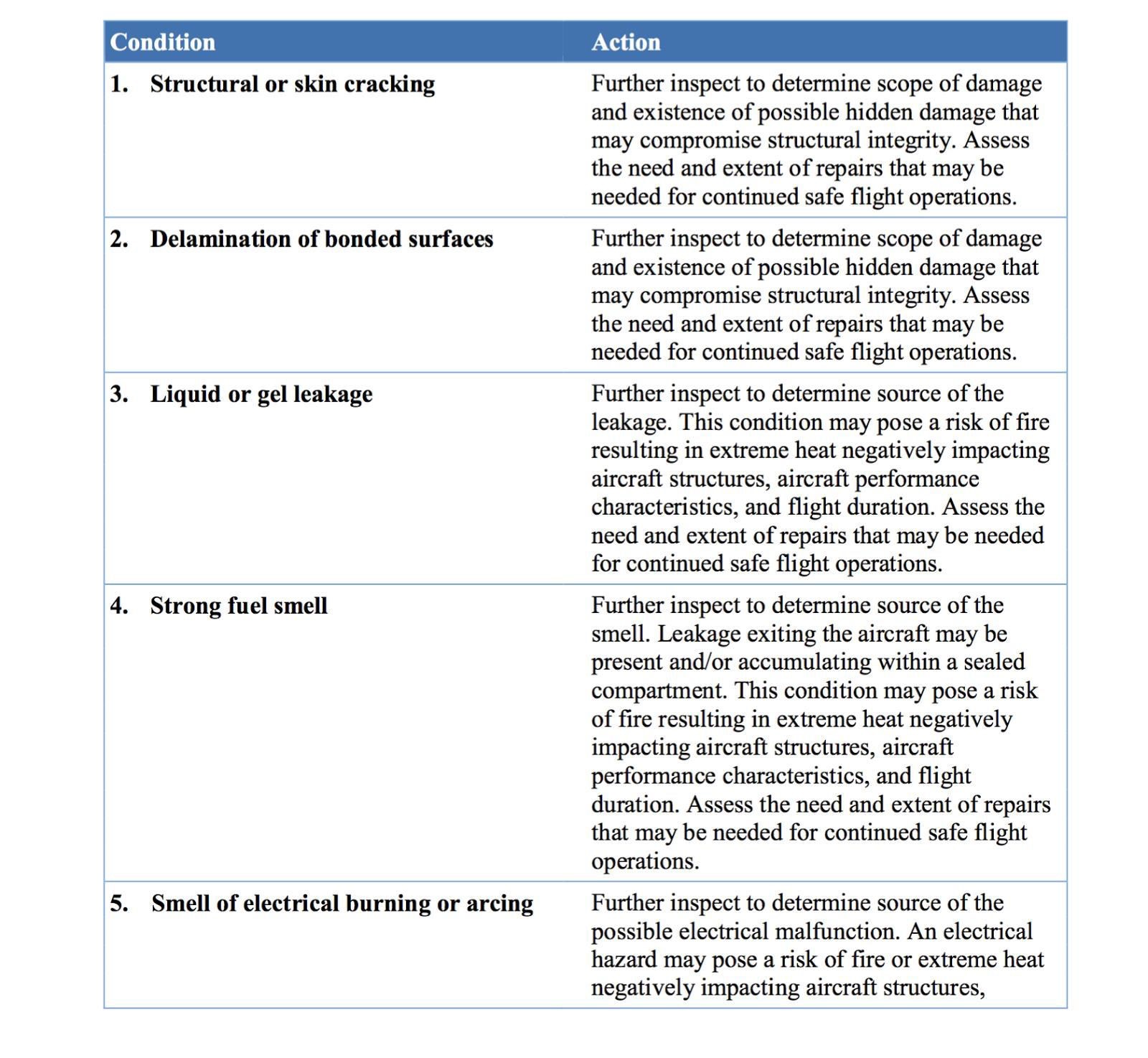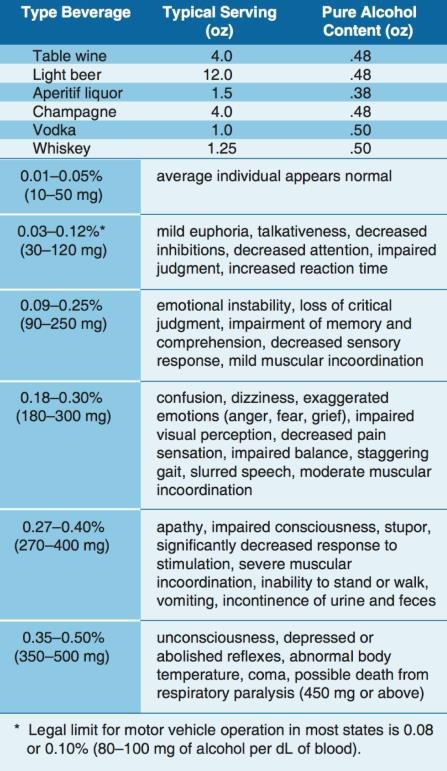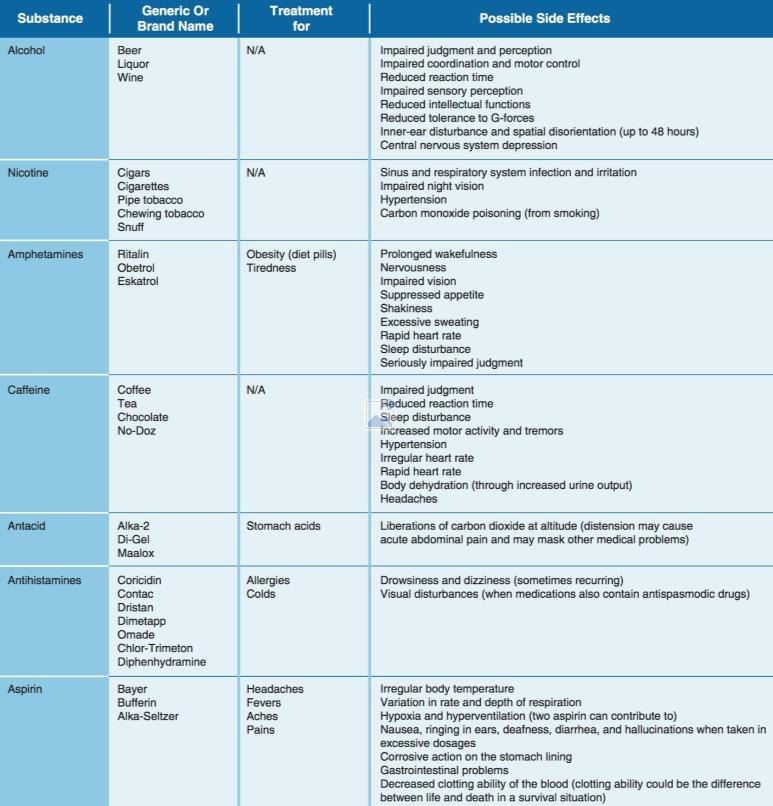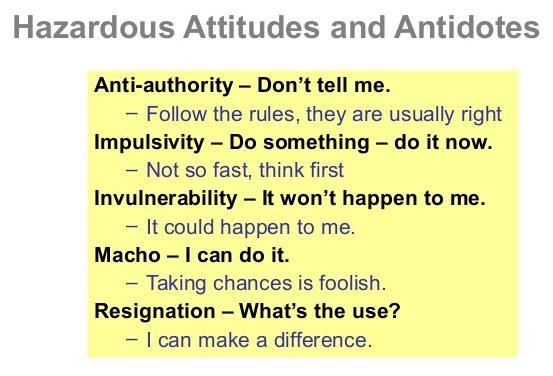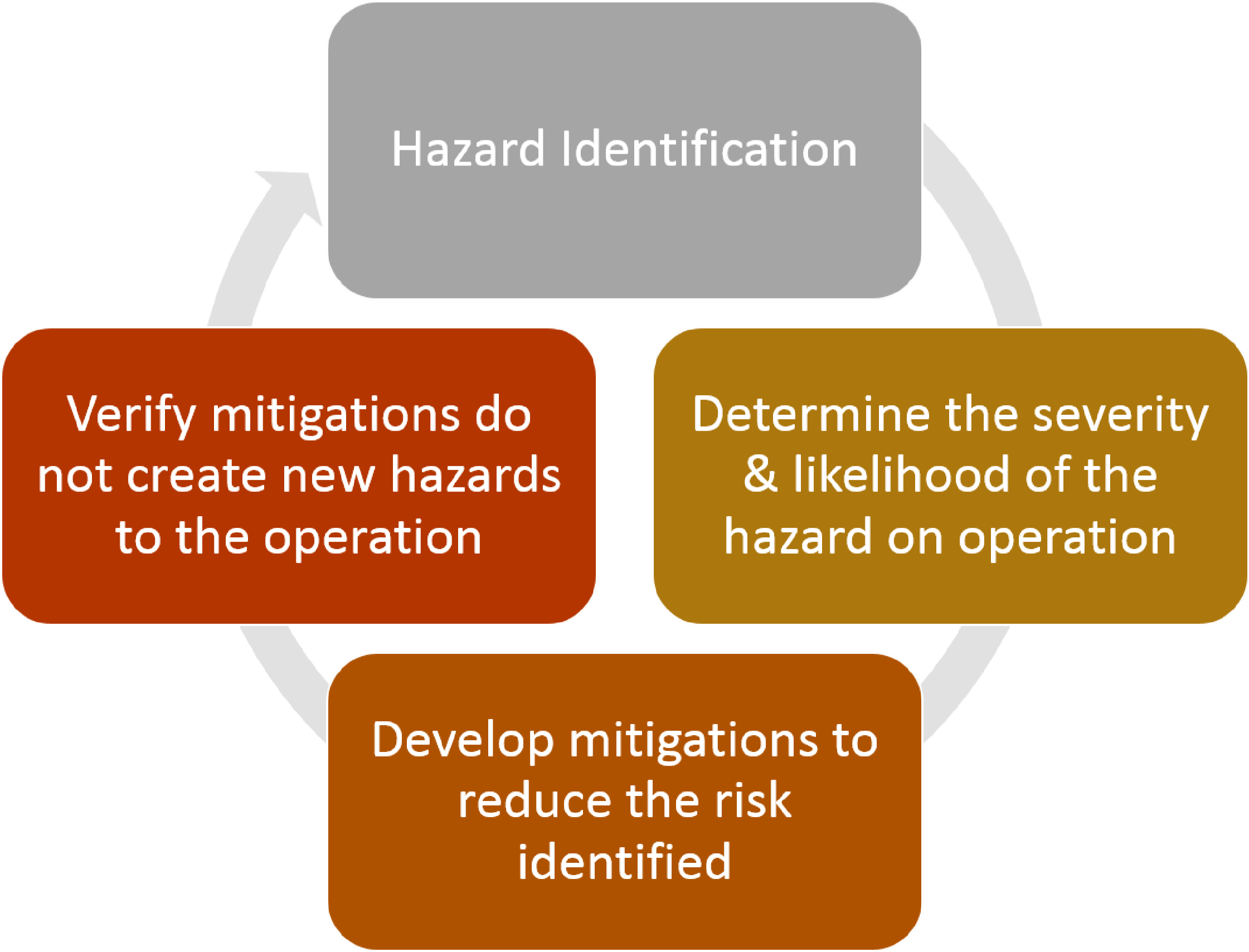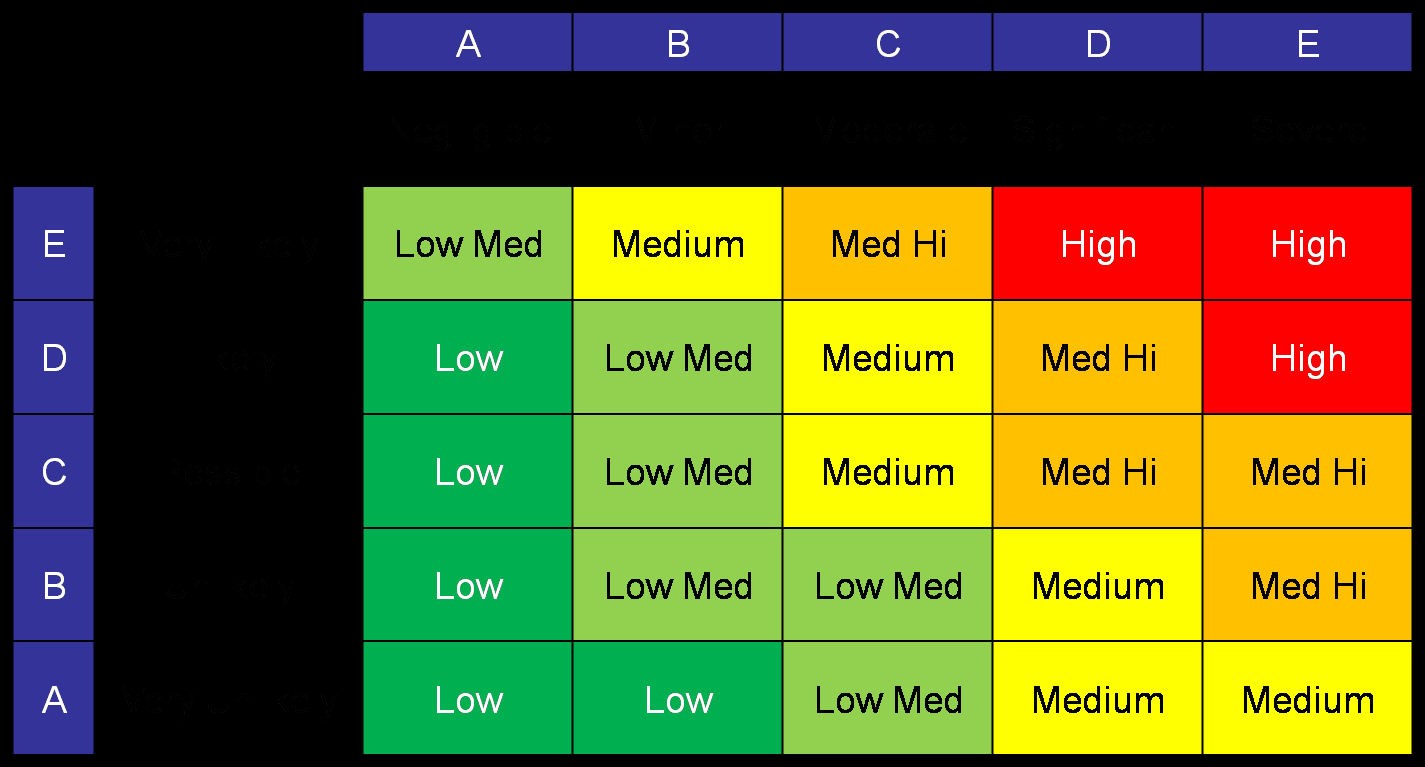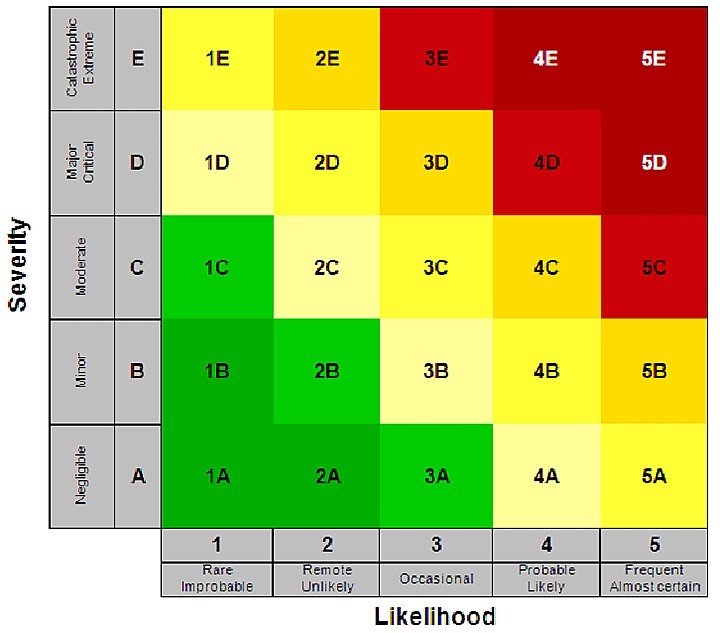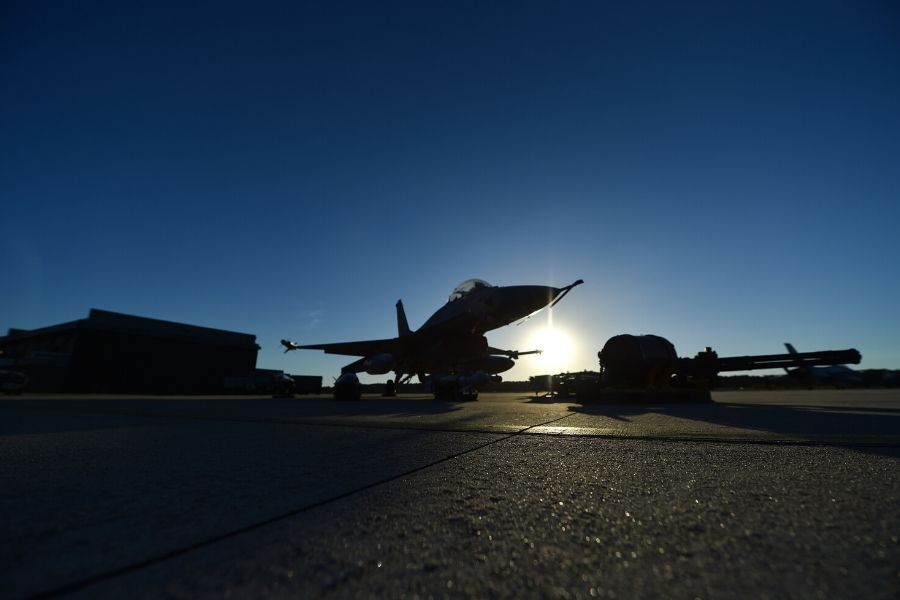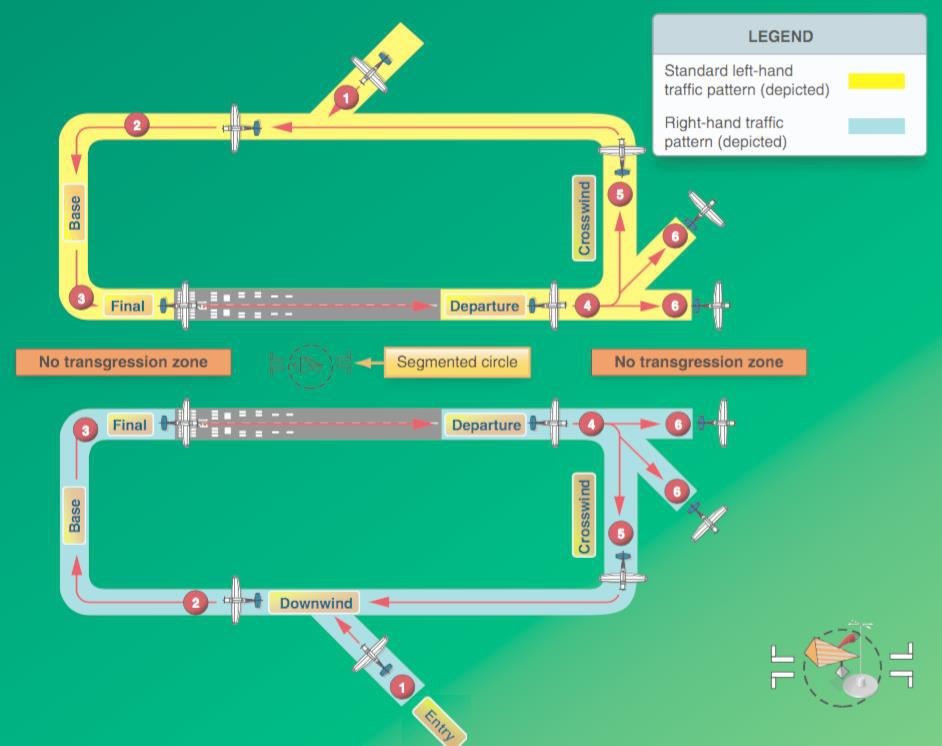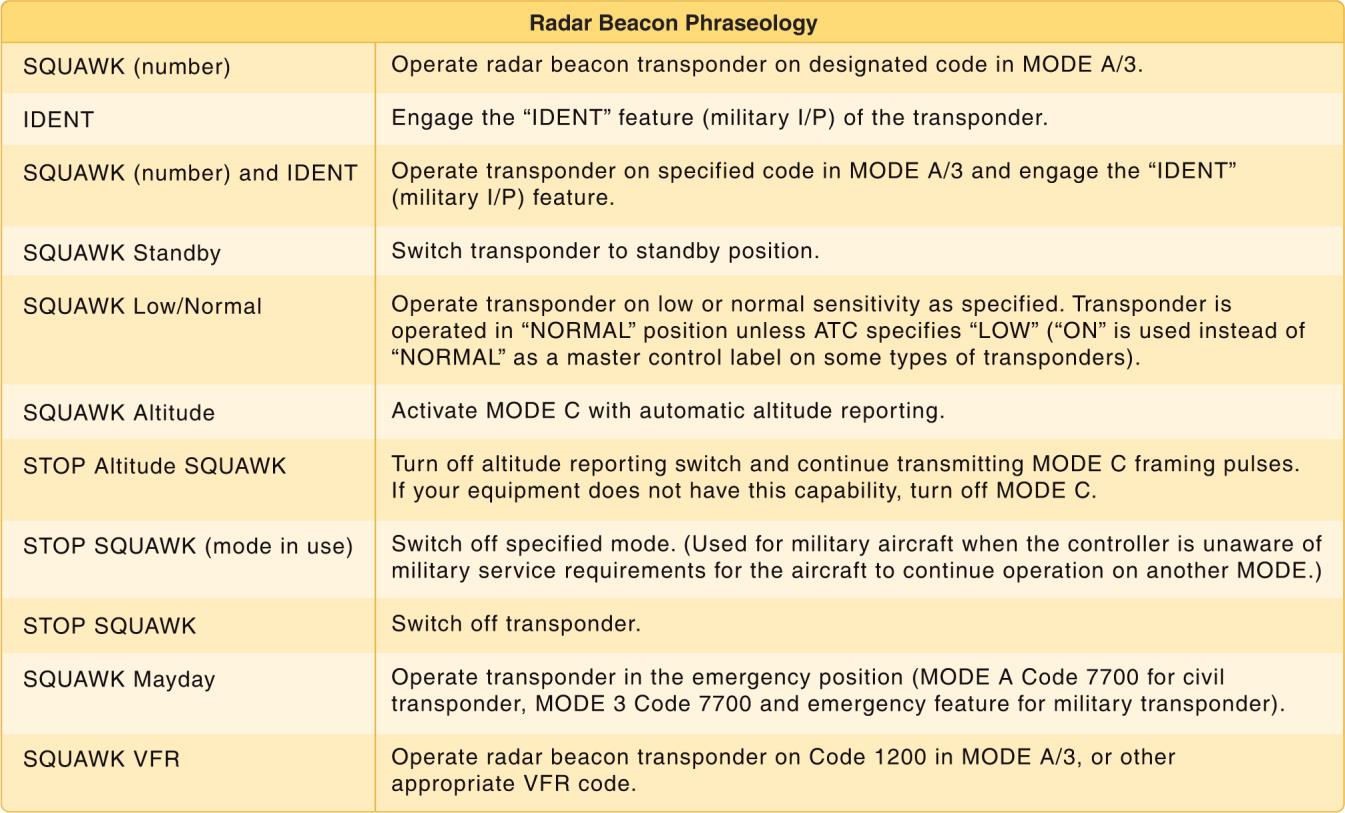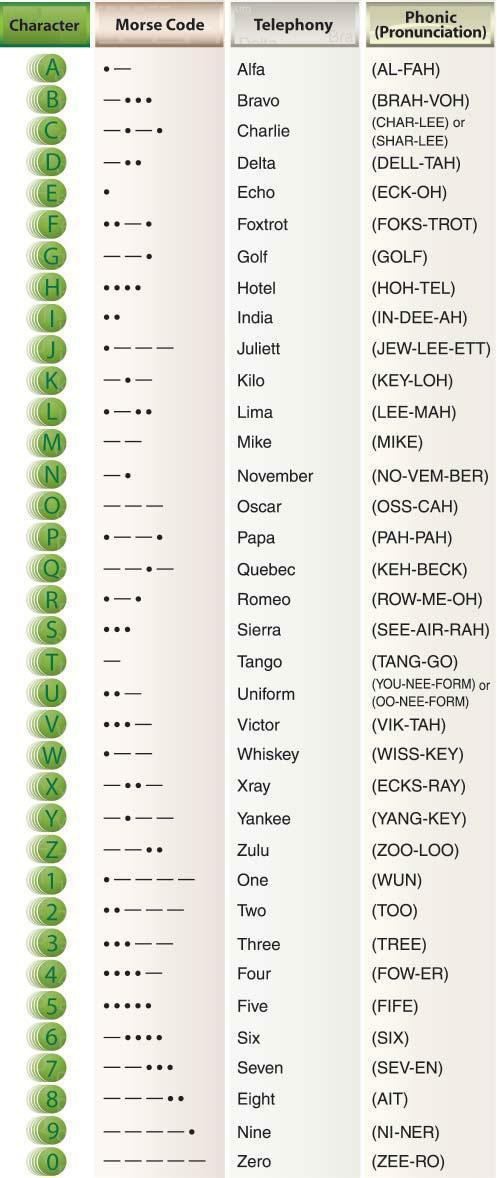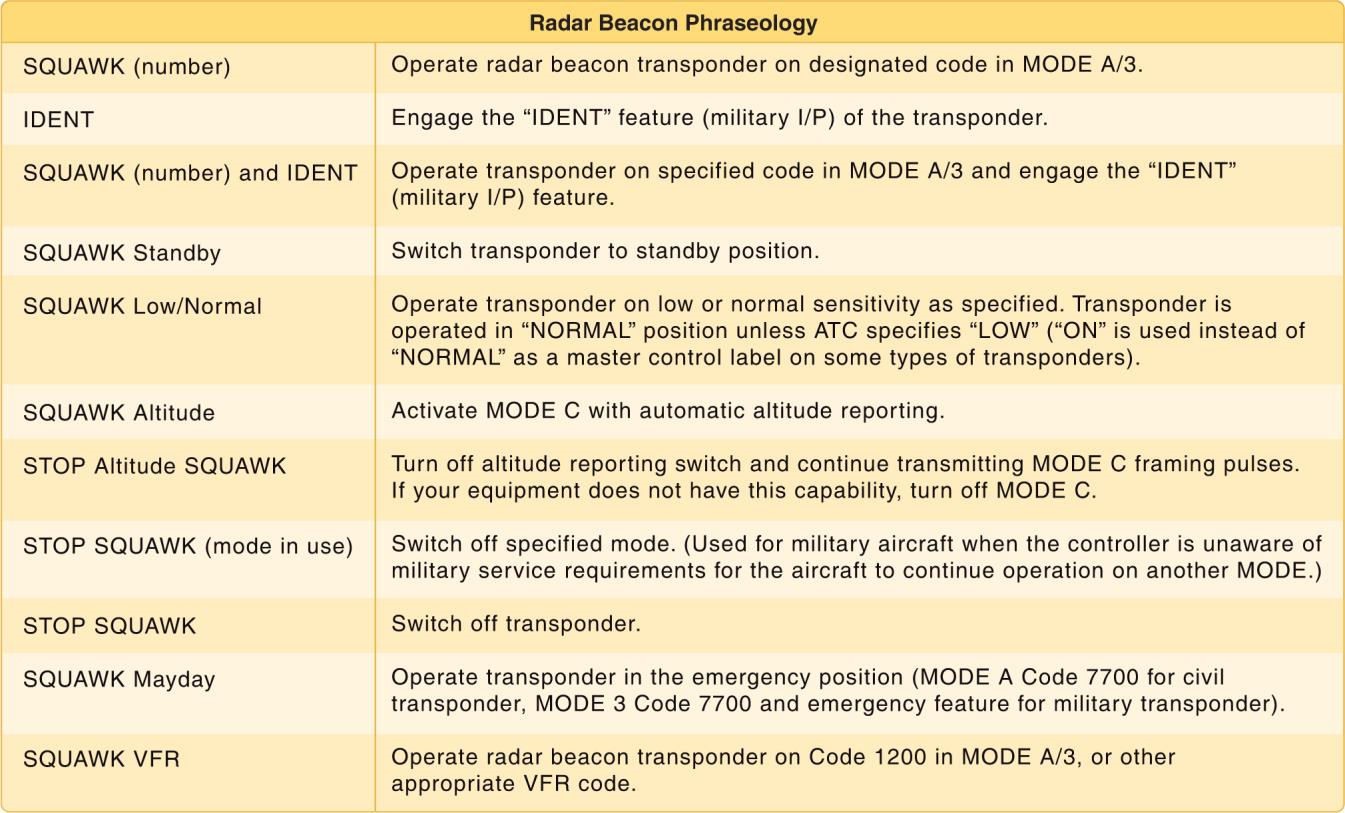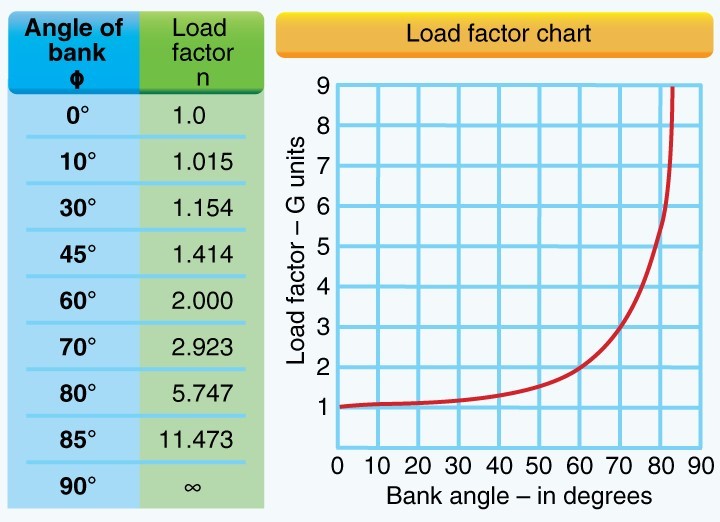1. A professional wildlife photographer operates a sUAS from a moving truck to capture aerial images of migrating birds in remote wetlands. The drive of the truck does not serve any crewmember role in the operation. Is this sUAS operation in compliance with 14 CFR Part 107?
- Compliant with Part 107
- Not compliant with Part 107
- Not compliant with state and local traffic laws
2. You have accepted football tickets in exchange for using your sUAS to videotape a future construction zone. What FAA regulation is this sUAS operation subject to?
- 14 CFR Part 101
- 14 CFR Part 107
- This operation is not subject to FAA regulations
3. To avoid a possible collision with a manned airplane, you estimate that your small unmanned aircraft climbed to an altitude greater than 600 feet AGL. to whom must you report the deviation?
- The National Transportation Safety Board
- Upon request of the Federal Aviation Administration
- Air Traffic Control
4. What do the blue shaped lines indicate throughout this sectional excerpt?
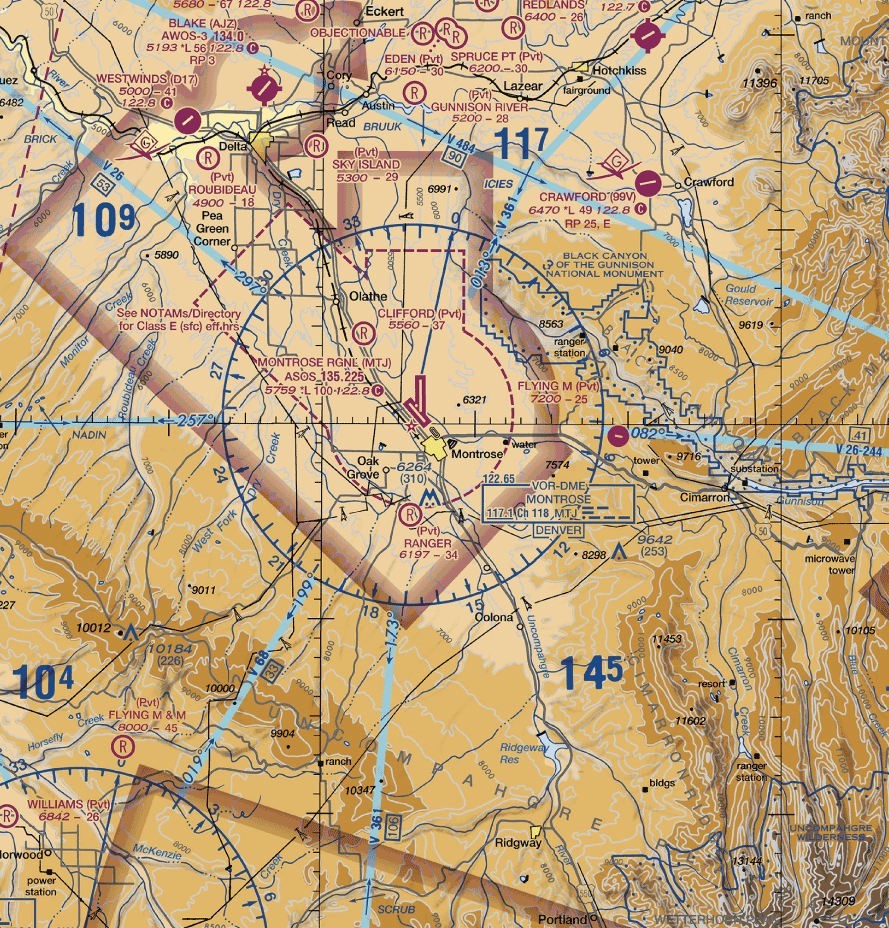
- Quadcopter capturing aerial imagery for crop monitoring
- UAS used for motion picture filming
- Model aircraft for hobby use
- 5. Which aircraft has right-of-way over other traffic?
- A sUAS
- An airplane
- A quad copter
6. As you are flying your sUAS, valued at $1000, over a home to photograph it for real estate sales purposes, the sUAS has a failure causing it to fall onto an awning, causing some minor damage. The fair market value of the awning is $800 but it can be repaired for $400. What type of report is required?
- No report is required.
- A sUAS accident report to the FAA, within 10 days of operation.
- A sUAS incident report to the FAA, within 10 days of the operation.
7. When must a current remote pilot certificate be in the pilot’s personal possession or readily accessible in the aircraft?
- When acting as a crew chief during launch and recovery
- Anytime when acting as pilot-in-command or as a required crew member
- Only when a payload is carried
8. Which of the following individuals may process an application for a Part 107 remote pilot certificate with a sUAS rating?
- Commercial Balloon pilot
- Designated Pilot examiner
- Remote Pilot in command
9. While operating a small unmanned aircraft system (a sUAS), you experience a flyaway and several people suffer injuries. Which of the following injuries requires reporting to the FAA?
- An injury requiring an overnight hospital stay.
- Scrapes and cuts bandaged on site.
- Minor bruises.
10. Which of the following types of operations are excluded from the requirements in 14 CFR Part 107?
- Quad copter capturing aerial imagery for crop monitoring
- UAS used for motion picture filming
- Model aircraft for hobby use
11. No person may attempt to act as a crewmember of a sUAS with
- .04 percent by weight or more alcohol in the blood
- 0.004 percent by weight or more alcohol in the blood
- .4 percent by weight or more alcohol in the blood
12. When requesting a waiver, the required documents should be presented to the FAA at least how many days prior to the planned operation?
- 90 days
- 30 days
- 10 days
13. Within how many days must an sUAS accident be reported to the FAA?
- 90 days
- 10 days
- 30 days
14. In accordance with 14 CFR Part 107, except when within a 400 foot radius of a structure, at what maximum altitude can you operate sUAS?
- 400 feet AGL
- 600 feet AGL
- 500 feet AGL
15. To satisfy medical requirements, all sUAS crewmembers must
- hold a valid third-class medical certificate
- complete a physical with an Aviation Medical examiner
- be free of any physical or mental condition that would interfere with the safe operation of the small unmanned aircraft system
16. When using a small unmanned aircraft in a commercial operation, who is responsible for informing the participants about emergency procedure?
- The lead visual observer
- The FAA inspection-in-charge
- Remote Pilot in Command
17. Power company employees use a sUAS to inspect a long stretch of high voltage powerlines due to muddy condition, their vehicle must stay beside the road and the crew must use binoculars to maintain visual line of sight with the aircraft. Is this sUAS operation in compliance with 14 CFR Part 107?
- No, the operation is not in compliance with Part 107.
- Yes, the operation is in compliance with Part 107.
- There is not enough information to make a determination.
18. Who is ultimately responsible for preventing a hazardous situation before an accident occurs?
- Person manipulating the controls
- Remote Pilot in Command
- Visual Observer
19. Within what airspace is Coeur D’ Alene Pappy Boyington Fld located?
-
- Class E
- Class B
- Class D
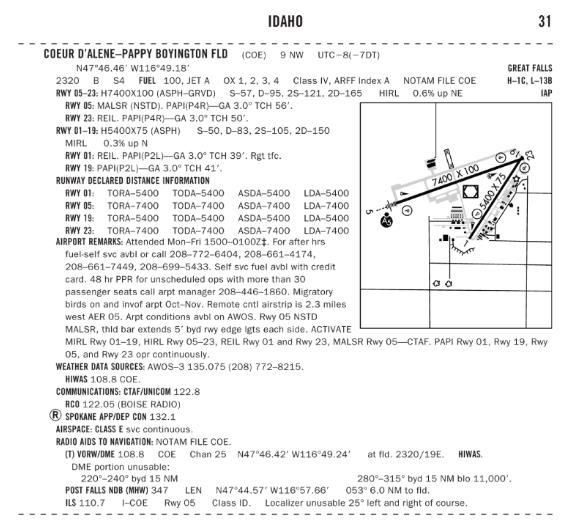
20. How would a remote PIC “Check NOTAMs” as noted in the CAUTION box regarding the unmarked balloon?
-
- By obtaining a briefing via an online source such as 1800WXbrief.com
- By utilizing the B4UFLY mobile application
- By contacting the FAA district office
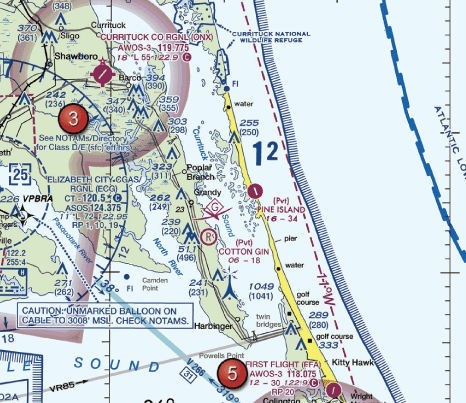
21. The airspace surrounding the Gila Bend AF AUX Airport (GXF) (area 6) is classified as
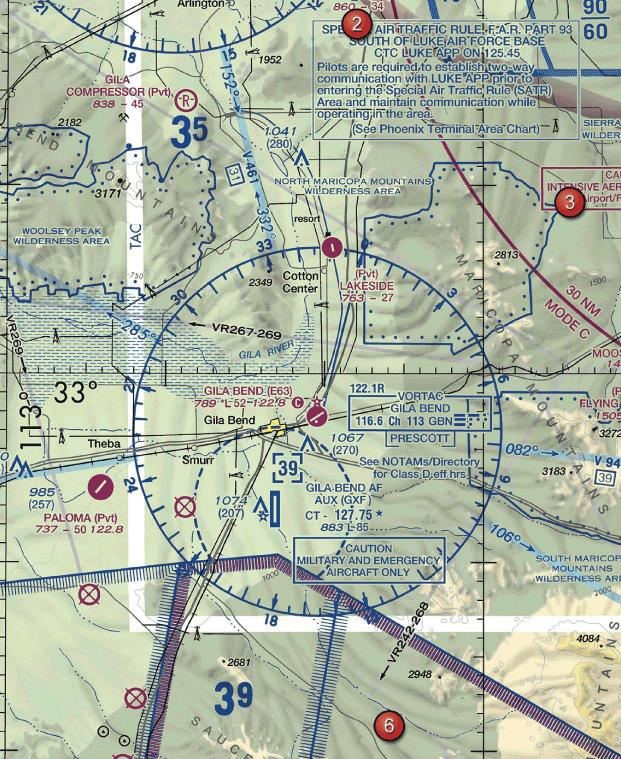
- Class B
- Class D
- Class C
22. The “taxiway ending” marker
- indicates taxiway does not continue
- identifies area where aircraft are prohibited
- provides general taxiing direction to named taxiway
23. Entries into traffic patterns by manned aircraft while descending create specific collision hazards and
- should be used whenever possible
- are illegal
- should be avoided
24. One of the purposes for issuing a Temporary Flight Restriction (TFR) is to
- announce Parachute Jump areas
- identify Airport Advisory areas
- protect public figures
25. When turning onto a taxiway from another taxiway, what is the purpose of the taxiway directional sign?
- Indicates designation and direction of taxiway leading out of an intersection
- Indicates direction to take off runway
- Indicates designation and direction of exit taxiway from runway
26. You plan to operate a 33 lb SUAS to capture aerial imagery over real estate for use in sales listings. What FAA regulation is this sUAS operation subject to?
- 14 CFR Part 101
- 14 CFR Part 107
- This operation is not subject to FAA regulations
27. What action, if any, is appropriate if the remote pilot deviates from Part 107 during an emergency?
- File a detained report to the FAA Administrator, upon request
- Take no special action since you are pilot-in-command
- File a report to the FAA Administrator, as soon as possible
28. You are operating a 1280 g (2.8 lb) quadcopter for your own enjoyment. What FAA regulation is this sUAS operation subject to?
- 14 CFR Part 107
- 14 CFR Part 101
- This operation is not subject to FAA regulations
29. According to 14 CFR Part 107, what is required to operate a small unmanned aircraft within 30 minutes after official sunset
- Use of a transponder
- Use of lighted anti-collision lights
- Must be operated in a rural area
30. Which preflight action is specifically required of the pilot prior to each flight?
- Assess the operating environment including local weather conditions, local airspace and any flight restrictions, the location of persons and property on the surface, and other ground hazards.
- Check the aircraft logbooks for appropriate entries.
- Visually inspect the pilot certificates of all crew members.
31. Remote Pilots are required to complete the following operational area surveillance prior to sUAS flight
- Select an operational area that is populated
- Keep the operational area free of and at an appropriate distance from all non-participants
- Make a plan to keep non-participants in viewing distance for the whole operation
32. As a remote pilot with an sUAS rating, under which situation can you deviate from 14 CFR Part 107?
- In response to an in-flight emergency.
- When conducting public operations during a search mission.
- Flying for enjoyment with family and friends.
33. Whose sole task during an sUAS operation is to watch the sUAS and report potential hazards to the rest of the crew?
- Remote pilot-in-command
- Visual Observer
- Person manipulating the controls
34. When must a current remote pilot certificate be in the pilot’s personal possession or readily accessible in the aircraft?
- Anytime when acting as pilot-in-command or as a required crewmember
- When acting as a crew chief during launch and recovery
- Only when a payload is carried
35. Each person who holds a pilot certificate, a US driver’s license, or a medical certificate shall present it for inspection upon the request for the Administrator, the National Transportation Safety board, or any
- authorized representative of the Department of State
- federal, state, or local law enforcement officer
- authorized Administrator of the Department of Transportation
36. Unless otherwise authorized, what is the maximum airspeed at which a person may operate an sUAS below 400 feet?
- 100 mph
- 80 mph
- 200 knots
37. In accordance with 14 CFR Part 107, you may operate an sUAS from a moving vehicle when no property is carried for compensation or hire
- Over suburban areas
- Over a sparsely populated area
- Over a parade or other social event
38. While monitoring the Cooperstown CTAF you hear an aircraft announce that they are midfield left downwind to RWY 13. Where would the aircraft be relative to the runway?
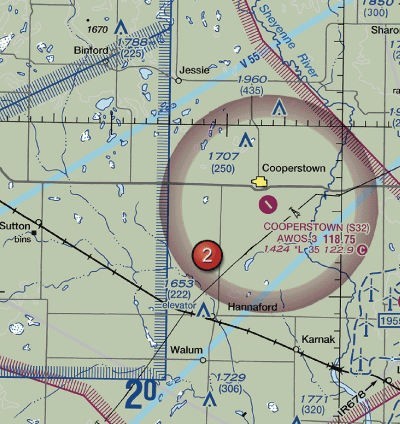
- The Aircraft is South
- The aircraft is East
- The aircraft is south
39. What does the line of longitude at area 7 measure?
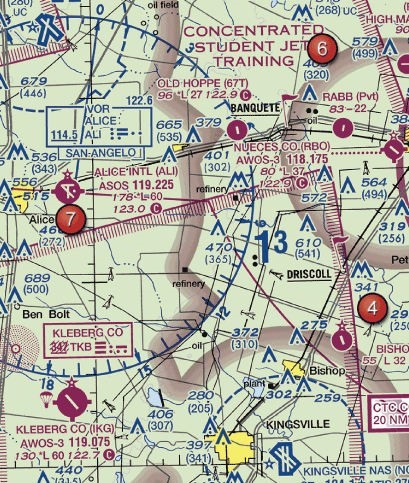
- The degrees of longitude east and west of the line that passed through Greenwich, England.
- The degrees of longitude east and west of the Prime Meridian.
- The degrees of longitude north and south from the equator.
40. One of the purposes for issuing a Temporary Flight Restriction (TFR) is to
- announce Parachute Jump areas
- identify Airport Advisory areas
- protect public figures
41. (Refer area 4 in Figure 25)The floor of Class B airspace overlying Hicks Airport (T67) northwest of Fort Worth Meacham Field is
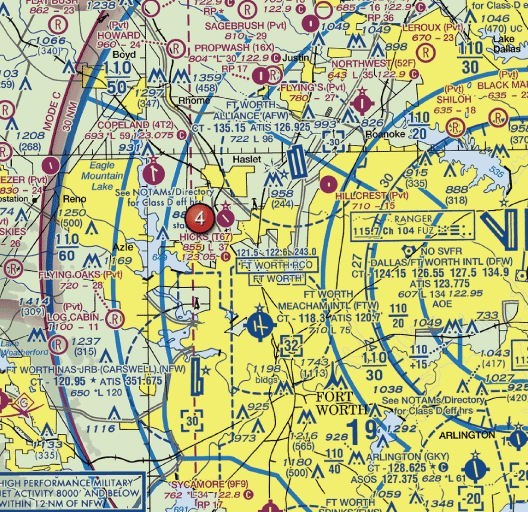
- 4,000 feet MSL
- at the surface
- 3,200 feet MSL
42. The recommended entry position for manned aircraft to enter an airport traffic pattern is
- 45 degrees to the base leg just below traffic pattern altitude
- to enter 45 degrees at the midpoint of the downwind left at traffic pattern altitude
- to cross directly over the airport at traffic pattern altitude and join the downwind leg
43. You have received authorization to operate a sUAS at an airport. When flying the sUAS, the ATC tower instructs you to stay clear of all runways. Which situation would indicate that you are complying with this request?
- You are on the double dashed yellow line side of markings near the runway
- You are over the dashed white lines in the center of the pavement
- You are on the double solid yellow line side of markings near the runway
44. The minimum distance from clouds required for sUAS part 107 operations is
- clear of clouds
- 500 feet above, 1,000 feet horizontally
- 500 feet below, 2,000 feet horizontally
45. The development of thermals depends upon
- a counterclockwise circulation of air
- solar heating
- temperature inversions
46. Thunderstorms which generally produce the most intense hazard to aircraft are
- squall line thunderstorms
- steady state thunderstorms
- warm front thuderstorms
47. An air mass moving inland from the coast in winter is likely to result in
- fog
- rain
- frost
48. Which factor would tend to increase the density altitude at a given airport referenced in the weather briefing?
- An increase in barometric pressure
- A decrease in relative humidity
- An increase in ambient temperature
49. What situation is most conducive to the formation of radiation fog?
- Moist, tropical air moving over cold offshore water
- The movement of cold air over much warmer water
- Warm, moist air over low, flatland areas on clear, calm nights
50. Which weather phenomenon is always associated with a thunderstorm?
- Heavy rain
- Hail
- Lightning
51. Upon your preflight evaluation of weather, the forecasts you reference state there is an unstable air mass approaching your location. Which would not be a concern for your impending operation?
- Thunderstorms
- Stratiform clouds
- Turbulent conditions
52. An increase in load factor will cause an unmanned aircraft to
- stall at a higher airspeed
- have a tendency to spin
- be more difficult to control
53. When range and economy of operation are the principal goals, the remote pilot must ensure that the sUAS will be operated at the recommended
- specific endurance
- long range cruise performance
- equivalent airspeed
54. Maximum endurance is obtained at the point of minimum power to maintain the aircraft
- in steady, level flight
- in a long range descent
- at its slowest possible indicated airspeed
55. The angle of attack at which an airfoil stalls which
- increase if the CG is moved forward
- change with an increase in gross weight
- remain the same regardless of gross weight
56. You are operating an sUAS that does not have GPS or an installed altimeter. How can you determine the altitude you are operating?
- Operating a second sUAS that has an altimeter to gain a visual perspective of 400 feet from the air.
- Gaining a visual perspective of what 400 feet looks like on the ground before the Flight.
- Operating the sUAS in close proximity of a tower known to be 400 feet tall.
57. The amount of excess load that can be imposed on the wing of an airplane depends upon the
- position of the CG
- speed of the airplane
- abruptness at which the load is applied
58. What could be a consequence of operating a small unmanned aircraft above its maximum allowable weight?
- shorter endurance
- increased maneuverability
- faster speed
59. According to 14 CFR Part 107, who is responsible for determining the performance of a small unmanned aircraft?
- Remote pilot-in-command
- Manufacturer
- Owner or operator
60. Before each flight the remote PIC must ensure that:
- objects carried on the sUAS are secure
- ATC has granted clearance
- the site supervisor has approved the flight

